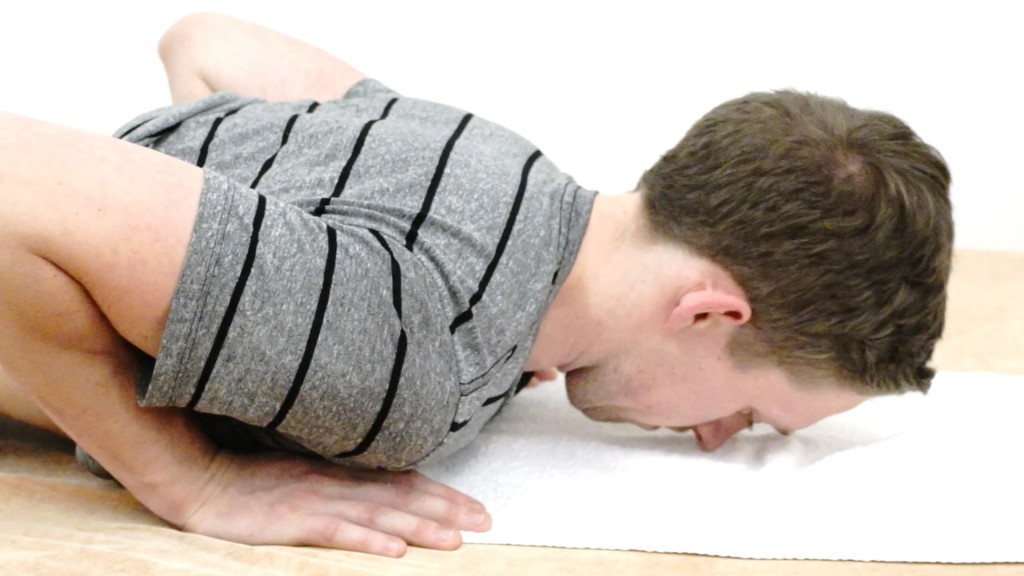We provide information and resources gleaned from founder Mark St. Peter’s work helping people overcome trauma and regain mobility. In addition to the exercises from our Basic 21, which will bolster your Kinetic Hygiene, we’ve promoted and applied the benefits of bodywork to help the body heal and align itself properly.
With our studio closed, frustratingly, we haven’t been able to offer hands-on tissue manipulation to our regular clientele. With studios everywhere closed, many people are left to suffer, unable to get the care that keeps them moving. To help ease those aches and pains, we want to focus on self massage and how to use some home massage tools.
There are tons of massage devices available. To keep things simple, today we will start with a look at two, basic, hand-held tools. No batteries required, just some good ol’ elbow grease. The basic difference between them is that the blue one is more rounded and the brown wooden one is more pointed. But what should you do differently with them? What are they designed for and how should they be used? Certainly you don’t just do a little rubbing and hope to walk away feeling relieved? No. It requires intention and systematic approach.
Let’s start with our little blue pal…
This one is blunt, made for applying a broader distribution of pressure to muscle tissues, great for slides and grinds, but not for finer details as much. Its arched handle lets its feet straddle long bones like the femur or shin, making it useful for working muscles on both sides of a bone. It will knead your muscles like dough, letting you provide more pressure to knots and hot spots than you might be able to with your hand.
It can be used almost anywhere you can reach (we will cover getting some other spots by using a cane-shaped device to get at hard to reach spots – stay tuned for more updates!). You can use it after workouts to help flush exercise byproducts or use it before a workout to help open the circulation. If you do any activity where your hands and forearms are tense (bicycling, tennis, computing), rubbing this massager on your brachioradialis can relieve some of the built up tension in the forearms.
Once you’ve got your larger muscles loosened up, if you want to get to a very specific deep spot, now you’re ready to reach for a more pointed tool like this brown wooden star tool…
While our blue friend could straddle bones, this tool is designed to get in between things. The bulbs on the end of the blue tool are broad, the points on the star tool are finer and allow you to apply even more pressure to a problem spot. The pointier the tip, the more concentrated the force. Work slowly and carefully. Make sure you don’t harm yourself. Self massage should feel good, if a little uncomfortable, like scratching an itch. No sharp shooting pains allowed.
The star tool can also break up the integrity of scar tissue over time by consistent stimulation of the resorptive enzymatic systems. Consistent agitation of scar tissue can promote resorption, keeping the cycle of healing moving forward. Inconsistent agitation can cause further hardening, so try to keep your bodywork regular. Remember: our bodies are alive and have intricate systems for healing. We’re trying to help activate those systems with proper motion. It’s what kinetic hygiene is all about! The right amount of movement in the right way.
*NOTE: Please be careful and work at your own pace. Slow and steady wins the race away from pain. Make sure you don’t put heavy pressure on glands that are soft masses found in the throat and/or the groin. Do not massage tumors, which you may find as harder, defined lumps (many of us have small, benign tumors, sometimes called skin tags). Work around these. Those of us with thinner skin may want to use a massage oil to avoid causing cracks or tears in the skin.
As always, this is not a substitute for medical advice. Please consult your medical provider prior to self-massage if you have any preexisting health concerns. Please contact us if you have any questions. Feel free to schedule a private, online consultation to get more advice. We hope this helps you mitigate your muscle aches.






